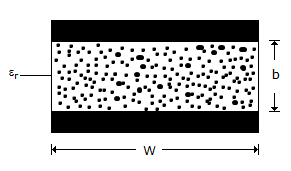Discussion
Home ‣ Electronics and Communication Engineering ‣ Power Electronics See What Others Are Saying!
- Question
If Vdc1 is the dc output voltage in half wave controlled rectifier circuit feeding resistive load and Vdc2 is the dc output voltage in full wave controlled rectifier circuit (M - 2 connection) feeding resistive load, then
Options- A. Vdc1 = 0.5 Vdc2 for all values of firing angle
- B. Vdc1 = Vdc2 for all values of firing angle
- C. Vdc1 ? 0.5 Vdc2 for all values of firing angle
- D. Vdc1 ? 0.5 Vdc2 for all values of firing angle
- Correct Answer
- Vdc1 = 0.5 Vdc2 for all values of firing angle
Explanation and Vdc =
and Vdc =  (1 + cos a).
(1 + cos a).
More questions
- 1. In a single phase full wave ac regulator using two thyristors only, the gate circuits of the two thyristors
Options- A. must be isolated
- B. may or may not be isolated
- C. should be preferably, isolated
- D. should not be isolated Discuss
Correct Answer: must be isolated
- 2. In a ripple counter,
Options- A. whenever a flip flop sets to 1, the next higher FF toggles
- B. whenever a flip flop sets to 0, the next higher FF remains unchanged
- C. whenever a flip flop sets to 1, the next higher FF faces race condition
- D. whenever a flip flop sets to 0, the next higher FF faces race condition Discuss
Correct Answer: whenever a flip flop sets to 1, the next higher FF toggles
Explanation:
In a ripple counter the effect ripples through the counter.- 3. Maximum efficiency of class B power amplifier is 50%.
Options- A. True
- B. False Discuss
Correct Answer: False
Explanation:
Maximum efficiency for class B-operation can be 78.5% .- 4. Which of the following commutation methods is the overall circuit under damped?
Options- A. Class A
- B. Class B
- C. Class C
- D. Both class A and Class B Discuss
Correct Answer: Both class A and Class B
- 5. The primary constants of a transmission line are
Options- A. R and L
- B. R, L and C
- C. R and C
- D. R, L, G and C Discuss
Correct Answer: R, L, G and C
- 6. For the strip line in the given figure the capacitance per unit length =

Options- A.

- B.

- C.

- D.
 Discuss
Discuss
Correct Answer:
Explanation:
 frads/unit length.
frads/unit length.
- 7. In which mode of circular waveguide does the attenuation continuously decrease as frequency is increased?
Options- A. TE01
- B. TE11
- C. TE05
- D. TE21 Discuss
Correct Answer: TE01
- 8. The beam of a radar should be
Options- A. very narrow
- B. very wide
- C. neither too narrow nor very wide
- D. either (b) or (c) Discuss
Correct Answer: very narrow
- 9. If temperature is increased, the temperature coefficient of a metal
Options- A. increases
- B. decreases
- C. may increase or decrease
- D. remains constant Discuss
Correct Answer: decreases
- 10. In an homogeneous dielectric subjected to an electric field E, the dipole moment per unit volume is ?0(?r - 1) E.
Options- A. True
- B. False Discuss
Correct Answer: True
Comments
There are no comments.
More in Electronics and Communication Engineering:
Programming
Copyright ©CuriousTab. All rights reserved.
